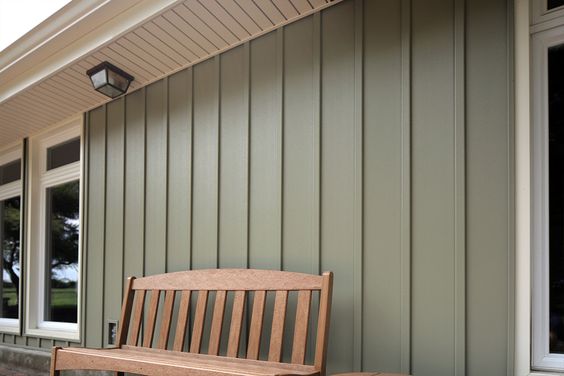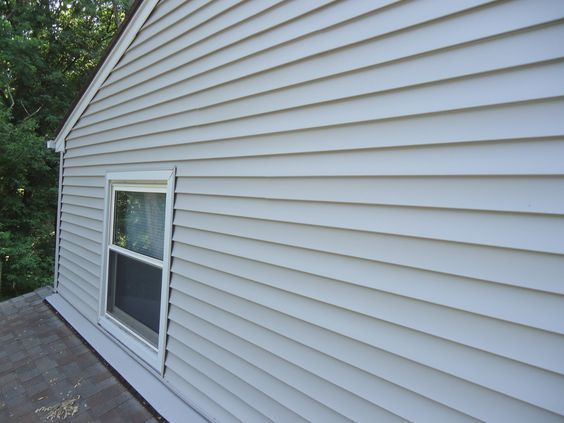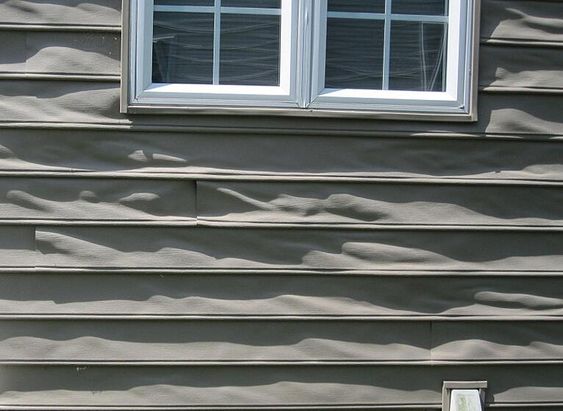
Vinyl siding has become the go-to choice for homeowners looking for an attractive, durable, and low-maintenance solution for their home's exterior. It offers a range of benefits, from enhancing curb appeal to protecting against the elements. However, it's essential to understand that vinyl siding, just like other siding materials, is not immune to damage. Although it is known for its durability and ability to withstand various weather conditions, several factors can lead to damage, such as cracks, fading, or warping.
Thankfully, skilled professionals have the expertise and skills to repair damaged vinyl siding effectively. Nevertheless, it is worth noting that the extent of damage sustained by the siding will determine whether it can be repaired or not.

Yes, it is possible to repair vinyl siding. However, it is crucial to have a good understanding of the process and be aware of certain limitations that come with it. When it comes to repairing this siding, there are a few key factors to consider.
If you want to repair your vinyl siding effectively, it is important to follow the correct procedures. Usually, you will need to remove the siding from the corner to ensure a thorough repair. You cannot just cut out and replace the damaged section by itself. You will need to carefully remove the surrounding panels to access the damaged area and perform the repair. This approach, which goes from corner to corner, ensures that the replacement section blends in seamlessly with the existing siding, creating a visually pleasing and consistent outcome.
It is important to keep in mind that even though this siding is a durable material, it is not completely immune to the effects of the environment. Sunlight and UV rays can cause the color of vinyl siding to fade over time, which can result in a subtle change in hue. This means that when replacing them with the same color, there may be a slight difference in shade between the new and existing panels.
The cost of repair varies depending on factors like the extent of its damage and specific repair areas. Simple fixes, such as small cracks or single panel replacements, typically cost around $250. On the other hand, more complex repairs involving larger sections or multiple damaged areas can reach a few thousand dollars. Both damage extent and repair complexity impact the costs of your siding repair, with larger repairs requiring the removal and replacement of significant sections.
There are also other factors that can impact the cost of your siding repair, such as the amount of work required, the cost of materials, and the rates charged by contractors in your area.
Repairing vinyl siding can be tricky and challenging. Finding an exact color match can be a tough and sometimes impossible task if you need to fix or replace a damaged part of your vinyl siding long after it was installed. This is especially true if the shade you need is no longer being made since the vinyl siding is usually manufactured in specific colors and shades that may change or become discontinued over time.
Manufacturing processes and product availability change over time, so it can be hard to find an identical hue that blends in with the existing siding seamlessly. This means homeowners and contractors may have to look for alternative solutions, like choosing the closest available color match or replacing the entire siding to ensure a uniform appearance. This situation emphasizes the importance of proper maintenance and timely repairs to preserve the aesthetic appeal of vinyl siding in the long run.

Vinyl siding has long been favored as one of the most economical options for homeowners seeking to enhance the appearance and protection of their homes. Its affordability, easy installation, and low maintenance requirements make it a popular choice in the construction industry.
It is generally durable and offers resistance to common issues like rot, insect infestation, and moisture damage; however, it is important to note that this siding may be more susceptible to certain types of damage when compared to other superior siding materials like LP Smart Side. For instance, vinyl siding can be more susceptible to cracking, chipping, or denting when exposed to extreme weather conditions, such as severe storms or hailstorms.
Furthermore, it is not resistant to some types of damage, and its condition can be affected by several factors over time. For example, if a grill is placed too close to the siding, it may melt due to the generated heat. Additionally, prolonged exposure to intense sunlight can cause uneven fading on certain sides of a home, where increased sun exposure speeds up the fading process. Furthermore, cracks can occur on the siding when children playing nearby accidentally hit it with objects like baseballs.
While vinyl siding offers numerous advantages for homeowners, it's important to recognize that it is susceptible to damage over time. By being aware of the potential risks, homeowners can take proactive measures to address and prevent common issues like cracks, fading, or warping. Regular inspections, prompt repairs, and proper maintenance can go a long way toward preserving the longevity and appearance of your vinyl siding.
In cases where significant damage or complex issues arise, consulting with experts in the field is always recommended. Professional contractors have the knowledge and expertise to assess the situation accurately and provide tailored solutions, ensuring that your vinyl siding remains in optimal condition. Remember, when in doubt, it's best to reach out to the professionals who can help you make informed decisions and keep your vinyl siding looking its best for years to come.